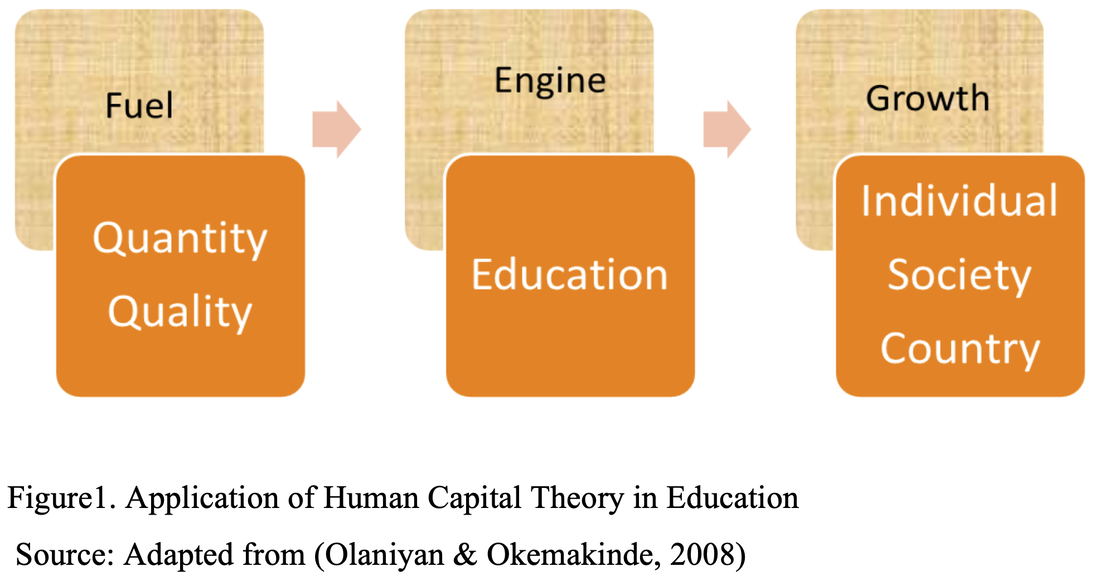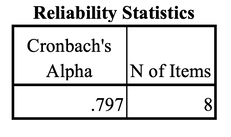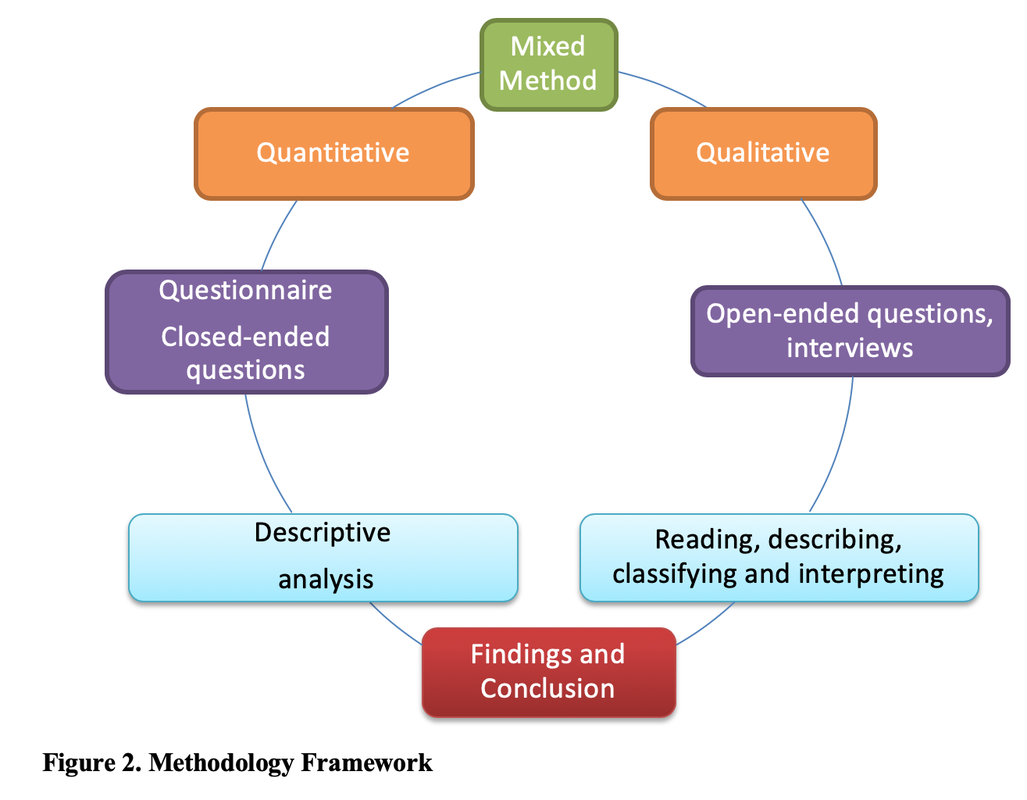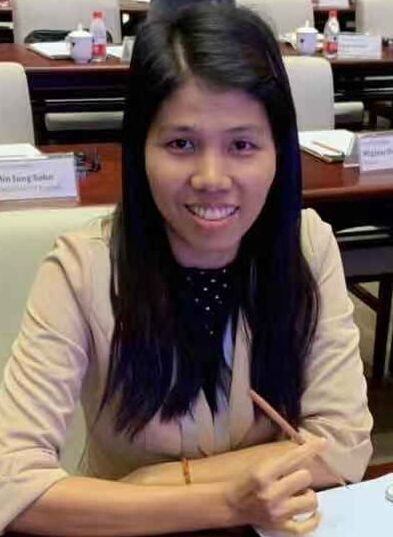|
- Home
- About WVN
-
WVN Issues
- Vol. 1 No. 1 (Oct. 2017) >
- Vol. 2 No. 1 (Feb. 2018) >
- Vol. 2 No. 2 (Jun. 2018) >
- Vol. 2 No. 3 (Oct. 2018) >
- Vol. 3 No. 1 (Feb. 2019) >
- Vol. 3 No. 2 (Jun. 2019) >
- Vol. 3 No. 3 (Oct. 2019) >
- Vol. 4 No. 1 (Feb. 2020) >
- Vol. 4 No. 2 (Jun. 2020) >
- Vol. 4 No. 3 (Oct. 2020) >
- Vol. 5 No. 1 (Feb. 2021) >
- Vol. 5 No. 2 (Jun. 2021) >
- Vol. 5 No. 3 (Oct. 2021) >
- Vol. 6 No. 1 (Feb. 2022) >
- Vol. 6 No. 2 (Jun. 2022) >
- Vol. 6 No. 3 (Oct. 2022) >
- Vol. 7 No. 1 (Feb. 2023) >
- Vol. 7 No. 2 (Jun. 2023) >
- Vol. 7 No. 3 (Oct. 2023) >
- Vol. 8 No. 1 (Feb. 2024) >
-
Events
- CIES 2023, Feb. 14-22, Washington D.C., USA
- ICES 4th National Conference, Tel Aviv University, Israel, 20 June 2021
- 2022 Virtual Conference of CESHK, 18-19 March 2022
- ISCEST Nigeria 7th Annual International Conference, 30 Nov.-3 Dec. 2020
- 3rd WCCES Symposium (Virtually through Zoom) 25-27 Nov. 2020
- CESA 12th Biennial Conference, Kathmandu, Nepal, 26-28 Sept. 2020
- CESI 10th International Conference, New Delhi, India, 9-11 Dec. 2019
- SOMEC Forum, Mexico City, 13 Nov. 2018
- WCCES Symposium, Geneva, 14-15 Jan. 2019
- 54th EC Meeting, Geneva, Switzerland, 14 Jan. 2019
- XVII World Congress of Comparative Education Societies, Cancún, Mexico, 20-24 May 2019
- ISCEST Nigeria 5th Annual Conference, 3-6 Dec. 2018
- CESI 9th International Conference, Vadodara, India, 14-16 Dec. 2018
- ICES 3rd National Conference, Ben-Gurion University, Israel, 17 Jan. 2019
- WCCES Retreat & EC Meeting, Johannesburg, 20-21 June 2018
- WCCES Symposium, Johannesburg, 21-22 June 2018
- 5th IOCES International Conference, 21-22 June 2018
- International Research Symposium, Sonepat, India, 11-12 Dec. 2017
- WCCES Info Session & Launch of Online Course on Practicing Nonviolence at CIES, 29 March 2018
- WCCES Leadership Meeting at CIES, 28 March 2018
- 52nd EC Meeting of WCCES, France, 10-11 Oct. 2017
- UIA Round Table Asia Pacific, Chiang Mai, Thailand, 21-22 Sept. 2017
- Online Courses
|
Abstract The main aim of this paper is to study the perceptions of international students on the investment in higher education of China. Chinese government is trying to internationalize the higher education. The participants are the international students from the summer programs of Beijing Normal University. The mix-method was used in this study. The research questions are: How do international students perceive the government investment programs in Higher Education? And what are the outcomes of these investments in Higher Education of China? Based on the quantitative and qualitative data, the research showed that the international students have positive view on Chinese culture and the investment programs. And we can see their future contribution to education based on the interview responses. It can be concluded that these investment program will have positive outcomes in Higher Education of China. Key words: Investments, higher education of China, internationalization, perceptions. Introduction Education plays a vital role in our lives. Education is very important for the progress and development of any individual, society and country. Mainly there are three division of education: primary, secondary, and tertiary education. But, nowadays, there is a rapid demand for higher education in every country. Higher education is the source of development of human resources and the development of science and technology and this thing leads to the longevity of the country and the nation. Far-reaching development strategy has become an important way for developed countries to continue to develop and developing countries to achieve development. As we all know, higher education is the key to the development of a nation. Generally, higher education is a foundation to lead to a large amount of benefits, especially financial security and a career. However, the role of higher education in the market-based society plays a vital role in our lives, for example, improving the whole quality of life, health and getting more opportunities to us (Vista College Education, 2017). Nowadays, higher education institutions are important to sustainable human development. And many of the studies showed that there is a correlation between the contribution of higher education and economic growth and long term benefits to society. Therefore, the work of the knowledge center is mainly based on higher education (The Association of Public and Land- grant Universities, 2017). According to Benjamin Franklin, an investment in knowledge pays the best. Therefore, every country is trying to make investment in education sector, primary, secondary and higher education level. Human capital development is enhanced through education at different levels, including primary, secondary, technical and vocational, higher education (The Association of Public and Land- grant Universities, 2017). But, most of the countries are trying to invest in higher education because investment in higher education is more critical piece of human capital development. In market-based society, higher education is a major driver of economic competitiveness (Olaniyan & Okemakinde, 2008). In China, investment in higher education is becoming prominent today. Since the 1980, the significant changes which called for corresponding reforms in its organizational structure, have been done in the internal and external environment for higher education (Yuan, 2000). The ministry of education states that “the overall objectives of higher education are to smooth the relationship, society and HEIs, setting up and perfecting a new system in which the state is responsible for the overall planning and macro management while the HEIs follow the laws and enjoy the autonomy to provide education according to needs of the society” (MoE Higher Education, 2007). Chinese government is also trying to internationalize higher education. Internationalization at home is one of the important factors in this regard. There are two sectors, the influx of international students and the influx of international programs offered in China. In 2005, only 78323 students from overseas were studying in China (China Statistical Yearbook 2006, 21-11, cited in Brandenburg & Zhu, 2007). In 2003, 712 programs were officially accredited and accepted as joint programs out of which only 150 were allowed to confer non-Chinese degrees. Nowadays, there are a lot of investment programs in higher education. Different kinds of programs are a form of investment in higher education like B&R Future Excellent Education Leaders (FELP) and International Network of Educational Institute (INEI) which are hosted by Higher Education Institute at Beijing Normal University. Therefore, it is very important to know the result of these programs. By knowing these results, we can improve the educational engine by comparing results and investment in higher education. But the outcome of the investment in education can’t be measured in a short period of time because it is a long-term process. However, we can access the perceptions of participants on these investment programs. Theoretical Framework Human Capital Theory This study is mainly based on human capital theory developed by D.A. Olaniyan and T. Okemakinde. They said that the belief that education is the engine of growth rests on the quality and quantity of education in any country. In every country, high quality of education is required to make a significant contribution to economic growth and development. The paradigm of twenty-first century is changing toward the improvement of knowledge economy as a priority. This has likely been a product of the resonation of states connecting their higher educational systems much more closely to their various economic development strategies. Education is an economic good. But it is not easily obtainable and thus to be apportioned (Olaniyan & Okemakinde, 2008). As education offers utility (satisfaction) to a consumer and also serves as an input to develop the human resources necessary for economic and social transformation, most of the economists regard education as both a consumer and capital good. It is widely accepted that education creates improved citizens and helps to upgrade the general standard of living in a society. There is a belief that expanding educational opportunities and access can promote economic growth (Olaniyan & Okemakinde, 2008). According to the Woodhall, (1997 cited in Leroy Almendarez, 2011), human capital theory relies on the assumption that formal education is highly instrumental and necessary to improve the productive capacity of a population. In short, human capital theorists argue that an educated population is a productive population. Human capital theory emphasizes how education increases the productivity and efficiency of workers by increasing the level of cognitive stock of economically productive human capability, which is a product of innate abilities and investment in human beings. The provision of formal education is seen as an investment in human capital, which proponents of the theory have considered as equally or even more worthwhile than that of physical capital. Human capital theory suggests that investment in human capital will lead to greater economic outputs (Becker 1993, cited in Almendarez, 2011). And education plays a vital role in the economic development of a nation, thus educational funding and expenditures and exchange programs are regarded in a form of investment (Olaniyan & Okemakinde, 2008). According to Babalola (2003, cited in Almendarez, 2011), the rationality behind investment in human capital is based on three arguments:
With further development of the economy, the role of knowledge innovation and technological progress in economic growth will become more and more obvious. It also shows that economic and social development contains a tremendous demand for higher education. Investment is regarded as fuel to run the education engine. If investment will have positive result, the education engine will be better and we will have good result on individuals and society. Reform and Investment in Higher Education in China China has the largest education system in the world. Nowadays, there are many reform and investment programs at different levels, primary, secondary and tertiary (higher education). Chinese government is also making investment in education especially higher education. In the 1980s, the Chinese Higher Education was facing four major issues: accelerating development of science and technology, social reform and innovation, reform in the economic system and methods of production, and conflicts between Chinese and Western culture (Gu, 2000). Thus, China had to find answers to these challenges. In 1980s, a remarkable change has been found in the Chinese higher education sector. China initiated reforms in the fields of economics, politics, and science and technology which also had repercussions on the educational system. Since the 1980s, the system of funding Chinese higher education has undergone continuous change (Li, 2016). As everyone knows, the impact of higher education on social and economic development of a nation is prominent. In the era of globalization, knowledge can be seen as a profitable product and productive resource. Therefore, the government of each country should be aware of the impact of higher education. Chinese government is more than aware of this and has made higher education an important tool for socio-economic development in both its discourse and in its practice (Li, 2016). The Chinese economy is now the second-largest economy in the world. In the internationalization of higher education, the government plays an active role. Higher education institutions need to be international because they work with knowledge (Newman, 1982). Therefore, universities and colleges can’t escape from the process of internationalization. In the age of globalization and information, internationalization of higher education can only be intensified (Li, 2016). Internationalization at home is one of the important factors to make internationalization of higher education. There are two sectors, the influx of international students and the influx of international programs offered in China. In 2005, only 78323 students from overseas were studying in China in 2005 (China Statistical Yearbook 2006, 21-11, cited in Brandenburg & Zhu, 2007). Now Chinese higher education institutions are enthusiastic about having exchange programs, admitting foreign students, offering courses taught in English and developing joint research programs. These exchange programs are some part of government investment in higher education (Li, 2016). According to human capital theory, these programs are regarded as the fuel to run higher education engine. If the higher education engine can be run effectively, the whole process of development of a nation can be enhanced. Therefore, we need to find out the result and outcome of these investments. Research Questions Different kinds of programs are also kind of investment in higher education like B&R Future Excellent Education Leaders (FELP) and International Network of Educational Institute (INEI). Therefore, it is very important to know the result of these programs. By knowing these results, we can improve the educational engine by comparing results and investment in higher education. But, the outcome of investment in education can’t be assessed in a short time. It is a long-term process and it is not a tangible outcome. However, we can measure the perceptions of participants who are involved in these investment programs.
Methodology Design Mixed-Method; QUAN-QUAL design was used for this study. For quantitative study, survey design was used. In doing the survey, a questionnaire was used. There were two kinds of items in the questionnaire, close-ended questions and open-ended questions. For qualitative study, interviews were conducted to study the perceptions of the international students on the investment in higher education. Subjects International students from B&R Future Excellent Education Leaders Program and International Education Institute were included as participants for this study. These programs are provided by Higher Education Institute of Beijing Normal University. B&R Future Excellent Education Leaders Program is a big program which is hosted by the Institute of Higher Education at Beijing Normal University in 2018. This program is under the great opportunity of boosting “the Belt and Road” (B&R) strategy and promoting regional education, opening up great communication and harmony in Beijing. This program aims to know more about pedagogies, Chinese history and cultural and international policy practice and academic research with a teaching framework, “lecture-fieldwork-group discussion” (Beijing Normal University, HEI, 2018). International Network of Educational Institute (INEI) is a program which is rooted in the shared optimism that the pooling of common experiences and achievements amongst a community of educators can bring about advancement in education internationally. This program is also hosted by Higher Education Institute at Beijing Normal University (Beijing Normal University, HEI, 2018). Instruments In this study, a questionnaire and interviews were used to study the perception of the international students on the investment in higher education. The questionnaire consisted of three sections. The first section included demographic background of students. The second section of the questionnaire consisted of eight statement, five-point Likert-type scale. In responding to the statements, students were asked to read each statement carefully and mark the degree to which they agree or disagree using the following keys: 1-strongly disagree, 2-disagree, 3-undecided, 4-agree and 5-strongly agree. And the third section is composed of open-ended question. The interviews were also conducted to get more specific answers. For demographic information, the following three statements were used.
For the open-ended questions, and interviews, the following three questions were used.
Instrument Validity According to the time limit, the researcher didn’t ask any validations from any professor. However, in order to get validation, copies of the questionnaire were distributed to the five students from these summer programs before conducting the real survey. Validations for questionnaire were returned (100%) from the students. After that, items were modified again. The researcher also calculated the internal consistency reliability of the questionnaire determined by Cronbach's alpha. The Cronbach's alpha internal consistency reliability was 0.797. Based on value of the Cronbach’s alpha, the reliability of the questionnaire is strong. The result from the analysis for Cronbach's alpha internal consistency reliability is as follow. Procedure In the major survey, questionnaires to assess perception of students toward investment in higher education were administered to the students from 10 to 17 July, 2018. The rights of the students and purpose of the study were explained to all students by the researcher. Students were also informed that their responses to the questionnaire was only be used for this study. Finally, their responses were used in the analysis included in the Appendix (pdf file attached below).
Analysis of the Data To analyze the quantitative data, the Statistical Package for Social Science (SPSS) version (20) was used. The data was analyzed by using descriptive statistics (percentage) for the quantitative data. For qualitative data, the qualitative data analysis method was used, Reading, Describing, Classifying and Interpreting (Gay, 2003). Findings
The purpose here is to study the international student’s perception on government investment in higher education and outcomes of investment in higher education. In the findings, there are two sections, the first part is the quantitative findings and the second part is qualitative findings. Before these two sections, the researcher also provides the demographic information of the participants. Conclusion The purpose this study is to study the international student’s perception on government investment in higher education and outcomes of investment in higher education. As we know, the outcomes of investment in education can not be measured in a short time because it is long term process. However, we can find out the result of these programs from the perceptions of the participants who are involved in these programs. According to the findings of this study, the international students have positive view on Chinese culture and the investment programs. And we can see their future contribution to education based on the interview responses. It can be concluded that these investment program will have positive outcome in Higher Education of China. According to Becker (1993, cited in Almendarez, 2011), investment in human capital will lead to economic growth and development. If such types of programs have positive results, we will grow individually and as a society. If don’t, then there is a need to improve the quality of educational engine. References Almendarez, L. (2011) Human Capital Theory: Implications for Educational Development http://www.open.uwi.edu/sites/default/files/bnccde/belize/conference/papers2010/almendarez.html Beijing Normal University, HEI, (2018). B & R Future Excellent Education Leaders Program Beijing Normal University, HEI, (2018). International Network of Educational Institute. Brandenburg, U. & Zhu, J. (2007). Higher Education in China in the light of massification and demographic change: Lessons to be learned for Germany Gay, L. R. (2003). Educational research: Competencies for analysis and applications. Pearson Education, Inc., Upper Saddle River, New Jersey. Gu (2000):What is facing Chinese Higher Education in the new century”; in: Current Issues in Chinese Higher Education. Education and Skills, OECD (2000), pp. 13-20; http://www.eric.ed.gov/ERICDocs/data/ericdocs2sql/content_storage_01/0000019b/80/1a/58 /58.pdf, Li, F. (2016) The Internationalization Of Higher Education In China: The Role Of Government. Journal of International Education Research – First Quarter 2016 Volume 12, Number 1 MoE Higher Education 2007: http://www.moe.edu.cn/english/higher_h.htm, Newman, 1982). Newman, H. (1982). The Idea of a University. Notre Dame, Indiana: University of Notre Dame Press. Olaniyan, D. A. & Okemakinde, T. (2008). Human Capital Theory: Implications for Educational Development. Pakistan Journal of Social Sciences 5 (5):479-483. The Association of Public and Land- grant Universities, (2017) .Why Higher Education? http://www.aplu.org/projects-and-initiatives/international-programs/knowledge-center-for-advancing-development-through-higher-education/why-higher-education.html Vista College Education, (2017). Invest in your future with higher education. https://www.vistacollege.edu/blog/resources/higher-education-in-the-21st-century/ Yuan (2000 “An analysis of innovation in Chinese Higher Education adaptable to the New environment”; in: Current Issues in Chinese Higher Education. Education and Skills. http://www.eric.ed.gov/ERICDocs/data/ericdocs2sql/content_storage_01/0000019b/80/1a/58/58.pdf
1 Comment
|
AuthorHnin Yu Soe &
Muhammad Imran University of Science and Technology Beijing, China ArchivesCategoriesChina Image Attribution: chensiyuan [CC BY-SA 4.0 (https://creativecommons.org/licenses/by-sa/4.0)] |
||||||
- Home
- About WVN
-
WVN Issues
- Vol. 1 No. 1 (Oct. 2017) >
- Vol. 2 No. 1 (Feb. 2018) >
- Vol. 2 No. 2 (Jun. 2018) >
- Vol. 2 No. 3 (Oct. 2018) >
- Vol. 3 No. 1 (Feb. 2019) >
- Vol. 3 No. 2 (Jun. 2019) >
- Vol. 3 No. 3 (Oct. 2019) >
- Vol. 4 No. 1 (Feb. 2020) >
- Vol. 4 No. 2 (Jun. 2020) >
- Vol. 4 No. 3 (Oct. 2020) >
- Vol. 5 No. 1 (Feb. 2021) >
- Vol. 5 No. 2 (Jun. 2021) >
- Vol. 5 No. 3 (Oct. 2021) >
- Vol. 6 No. 1 (Feb. 2022) >
- Vol. 6 No. 2 (Jun. 2022) >
- Vol. 6 No. 3 (Oct. 2022) >
- Vol. 7 No. 1 (Feb. 2023) >
- Vol. 7 No. 2 (Jun. 2023) >
- Vol. 7 No. 3 (Oct. 2023) >
- Vol. 8 No. 1 (Feb. 2024) >
-
Events
- CIES 2023, Feb. 14-22, Washington D.C., USA
- ICES 4th National Conference, Tel Aviv University, Israel, 20 June 2021
- 2022 Virtual Conference of CESHK, 18-19 March 2022
- ISCEST Nigeria 7th Annual International Conference, 30 Nov.-3 Dec. 2020
- 3rd WCCES Symposium (Virtually through Zoom) 25-27 Nov. 2020
- CESA 12th Biennial Conference, Kathmandu, Nepal, 26-28 Sept. 2020
- CESI 10th International Conference, New Delhi, India, 9-11 Dec. 2019
- SOMEC Forum, Mexico City, 13 Nov. 2018
- WCCES Symposium, Geneva, 14-15 Jan. 2019
- 54th EC Meeting, Geneva, Switzerland, 14 Jan. 2019
- XVII World Congress of Comparative Education Societies, Cancún, Mexico, 20-24 May 2019
- ISCEST Nigeria 5th Annual Conference, 3-6 Dec. 2018
- CESI 9th International Conference, Vadodara, India, 14-16 Dec. 2018
- ICES 3rd National Conference, Ben-Gurion University, Israel, 17 Jan. 2019
- WCCES Retreat & EC Meeting, Johannesburg, 20-21 June 2018
- WCCES Symposium, Johannesburg, 21-22 June 2018
- 5th IOCES International Conference, 21-22 June 2018
- International Research Symposium, Sonepat, India, 11-12 Dec. 2017
- WCCES Info Session & Launch of Online Course on Practicing Nonviolence at CIES, 29 March 2018
- WCCES Leadership Meeting at CIES, 28 March 2018
- 52nd EC Meeting of WCCES, France, 10-11 Oct. 2017
- UIA Round Table Asia Pacific, Chiang Mai, Thailand, 21-22 Sept. 2017
- Online Courses






 RSS Feed
RSS Feed
